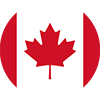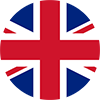How To Trim When You Have An STD? Step-By-Step Guide
Taking care of your hair down there when you have an STD can be tricky. STDs come in two kinds: some spread through fluids, and others through skin contact. This blog will guide you on safe trimming methods without worsening or spreading an infection.
Precautions for trimming
Trimming with an STD requires precautions to prevent spreading the infection. Here are important measures to consider:
- Avoid trimming during outbreaks to minimize the risk of spreading the infection.
- Consult a healthcare professional if you experience unidentified symptoms before trimming.
- Sanitize tools meticulously before and after use to prevent infection transmission.
- Use a different trimmer for specific areas to reduce cross - contamination risk.
- Stop trimming immediately if open sores or new bumps appear and seek medical advice.
These precautions are essential for safe and responsible grooming when living with an STD.
Trimming With STDs
Consult a doctor for any unidentified symptoms. Avoid trimming during outbreaks.
Avoid trimming during outbreaks
Individuals with STDs should refrain from trimming during outbreaks to prevent the spread of infections. Open sores or new red bumps signify active infection, prompting immediate cessation of grooming activities and seeking medical attention.
Using a different trimmer or blade for affected areas can help contain the spread of infections. Practicing regular hygiene such as showering before grooming and maintaining hand cleanliness is crucial to curb bacterial or viral transmission during outbreaks.
Consultation with a healthcare professional is vital for unidentified symptoms to ensure proper STD management.
Sanitizing trimmer blades using rubbing alcohol, diluted bleach, or Barbicide can effectively thwart the propagation of infections during outbreaks. By following these precautions, individuals can minimize the risk of spreading STDs while managing their personal grooming needs responsibly.
Sanitize tools to prevent spreading infections
To prevent spreading infections, follow these steps to sanitize your trimmer tools:
- Use rubbing alcohol, diluted bleach, or Barbicide to disinfect the blades thoroughly.
- Consider purchasing a trimmer with removable blades for easier cleaning and sanitation.
- After each use, manually sanitize the blades unless you are willing to dispose of them.
- For additional convenience, obtain a second blade for your trimmer to ensure a sanitized backup. Remember that Barbicide can also lubricate the blade.
- Implementing these measures will help reduce the risk of spreading infections during trimming.
Sanitizing Trimmer Blades
Sanitizing trimmer blades is essential to prevent the spread of infections, read on for crucial tips.
Methods for sanitizing
To sanitize trimmer blades, follow these methods:
- Soak the blade in rubbing alcohol for several minutes, then dry it off.
- Mix a small amount of bleach with water, soak the blade, and then dry it off.
- Use Barbicide at full - strength or according to the product's instructions for sanitizing.
- Consider that Barbicide may be more expensive but can also lubricate the blade.
- Practice manual sanitation after each use unless willing to dispose of blades, which is not recommended.
These steps are vital to prevent the spread of infections while trimming with an STD.
Importance of manual sanitation
Manual sanitation is crucial for preventing the spread of infections when trimming with an STD. Removable blades are easier to sanitize using rubbing alcohol, diluted bleach, or Barbicide.
It's important to remember that a blade subscription does not eliminate the need for manual sanitation after each use. A second blade for a trimmer ensures a sanitized blade is always ready and purchasing one specifically designed for body hair can help maintain hygiene standards.
Purchasing additional blades and sanitizing them regularly helps prevent the spread of infections, especially when dealing with an STD. Rubbing alcohol, diluted bleach, or Barbicide are efficient in sanitizing removable trimmer blades.
Purchasing additional blades for sanitation
To ensure proper sanitation, it is important to consider purchasing an extra blade for your trimmer. This allows you to have a sanitized blade ready for use at all times. It's advisable to opt for a trimmer with a removable option that enables the easy interchange of blades, ensuring consistent cleanliness.
Remember, manual sanitation after each use is crucial unless disposed of immediately, which is not recommended due to environmental concerns. The Body Blade for the Beardscape offers color-coded rakes, helping users distinguish between blades designated for body and facial hair—enhancing hygiene practices while trimming.
The Body Blade for the Beardscape
The Beardscape offers a Body Blade, which uses color-coded rakes to differentiate between body and facial hair blades. A separate blade for sanitation purposes can be purchased, allowing users to maintain a sanitized blade at all times.
Manual sanitation is essential after each use of the blade, as a subscription service does not address sanitation needs. Additionally, it's recommended not to dispose of blades after each use, making the purchase of an extra blade advantageous for maintaining cleanliness and readiness.
Key Takeaways for Trimming with STDs
Consult a doctor for excessive itching, use different trimmer or sanitize the blade. Stop trimming if open sores or new bumps appear.
Consult a doctor for excessive itching
If experiencing excessive itching, it is vital to seek a doctor's advice promptly, especially for individuals with STDs. Prompt consultation can help in proper diagnosis and treatment of pubic lice or any other skin condition causing the excessive itching.
Furthermore, stopping trimming and consulting a doctor if open sores or new red bumps appear ensures proper diagnosis and treatment for potential STD-related skin conditions.
Use different trimmer or sanitize blade
When managing an STD, it's crucial to use a separate trimmer or sanitize the blade between uses to prevent spreading infections. Using a different trimmer for affected areas or thoroughly sanitizing the blade helps minimize the risk of transmitting STDs between skin surfaces during grooming.
This simple precaution can aid in maintaining personal hygiene and reducing infection risk.
Purchasing additional blades for sanitation or manually sanitizing the current blade are effective methods to prevent cross-contamination. Keeping tools clean is essential in managing an STD and promoting overall health.
Stop trimming if open sores or new bumps appear
If open sores or new bumps appear, immediately stop trimming. It's crucial to avoid aggravating the affected area. Seek medical advice if this occurs in order to prevent potential spread of infections.
It's important to take prompt action should any new red bumps or open sores emerge during trimming. Stop immediately as this can help mitigate any possible exacerbation of symptoms and minimize the risk of further complications arising from the condition.
Showering and Hand Hygiene
Showering before trimming helps prevent spreading bacteria or viruses. Good hand hygiene is crucial to stop infection transmission, especially for those with STDs. Maintaining clean hands and body is important when dealing with open sores or itching to prevent further spread of infections.
Conclusion
In wrapping up, it's crucial to consult a doctor for any unusual skin conditions and meticulously sanitize trimming tools to prevent spreading infections. If excessive itching occurs, seek medical advice.
Use a different trimmer or sanitize the blade if necessary, and stop trimming if open sores or new bumps appear on the skin. Remember to prioritize showering and hand hygiene when embarking on grooming routines with an STD.






